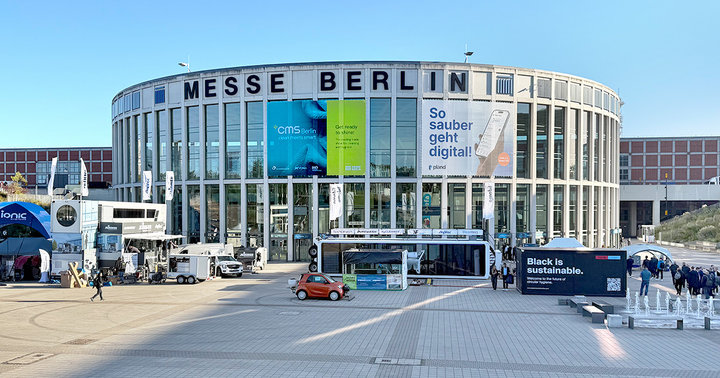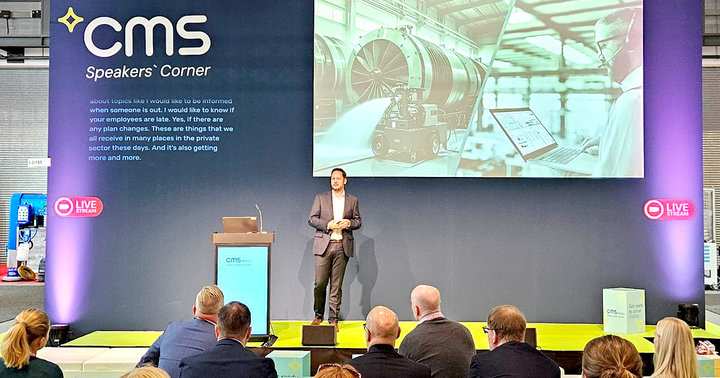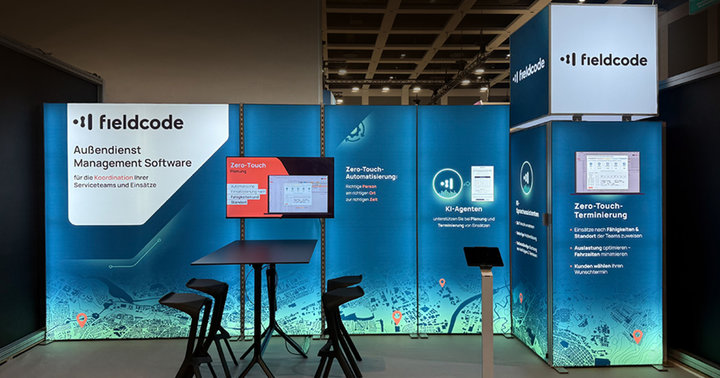What CMS Berlin 2025 taught us about the future of Cleaning Industry
From September 23 to 26, we walked the aisles, attended forums, and spoke with providers at CMS Berlin. One theme came through strongly: the industry is under pressure to deliver more with fewer people — while proving every task and handling requests that don’t fit standard routines.
Workforce gaps, the demand for proof of service, and the growing role of digitalisation and AI shaped discussions across the fair. In our booth conversations, another clear signal emerged: many existing solutions lack the flexibility providers need to manage special service requests beyond regular shift planning or time tracking.
Here are the key insights we documented throughout our presence at CMS Berlin 2025.
1. The German cleaning sector is redefining scale and pressure
CMS pulled no punches when associations laid out the numbers:
- The German building cleaning sector now employs around 658,000 people, making it one of the most labor-intensive trades in the country.
- In 2024, turnover in building cleaning surpassed €27 billion, with growth of nearly 10 % in core segments like maintenance, sanitary, and basic cleaning.
- Meanwhile, workforce shortages are rising. In BIV’s recent survey, over half of providers said they needed up to 10 % more staff, and more than one in five estimated their gap at 20 %.
These figures aren’t just industry trivia — they set the backdrop for every conversation we had at the booth. When cleaning volume grows but staffing lags, margin pressure and service risk intensify.
2. Digitalization and AI: Not buzzwords, but operational pivots
Over the four days, the CMS Practice Forum (organized with BIV, VDMA, and IHO) made one thing clear: the future of cleaning is built on data. The three core themes flagged were:
- Digitalisation & AI — exploring how algorithms, sensor data, and predictive logic can optimize cleaning scheduling, inspections, and route planning
- Practical application — sessions focused not on theory, but on deployment constraints: how to retrofit existing routines, how systems must interoperate, and where automation still needs human backup
- Robots are part of the solution, not the whole story. One topic that came up repeatedly: autonomous cleaning machines look promising, but they only work well if they’re plugged into a larger workflow system — from job slots to handoff logic.
3. First-hand feedback - Flexibility beyond regular shift planning
Conversations at our booth revealed another strong theme: many of the existing solutions in the market do not provide the flexibility providers now require. For Fieldcode, serving multiple industries, adaptability is central — especially when it comes to handling special service requests that go beyond routine shift planning or time tracking. This need for flexibility resonated with many visitors who were looking for options that can manage these non-standard scenarios without creating extra administrative burden.
In conversations with cleaning leaders, traceability, staffing gaps, and sustainable operations were among the top concerns. Our message: these aren’t separate challenges — they’re linked by coordination logic.
We saw real curiosity from visitors: how to connect cleaning routes with building layouts, how to evolve from reactive to predictive scheduling, how to capture proof of service in regulated environments.
4. What cleaning leaders should watch next
If you’re managing cleaning or facilities, here are three shifts to prioritize:
- From reactive to predictive operations: Let schedules, occupancy data, and usage patterns inform cleaning cycles instead of doing everything on fixed intervals
- Proof as a contract baseline: Be ready to supply time-stamped logs, sensor readings, or inspection evidence as standard deliverables
- Robots + digital coordination: Autonomous machines are useful — but only if they’re orchestrated. A cleaning robot without a system thinking about jobs, buffer times, handoffs, and skipped cycles will underdeliver
CMS Berlin 2025 reinforced something we already believe: in cleaning, the tools in your closet won’t always determine success. How you plan, coordinate, report often matters more — especially under pressure.
Take the next step: get a demo or see the power of Zero-Touch automation for the cleaning industry here.



